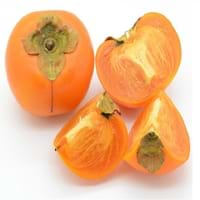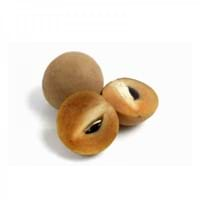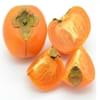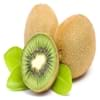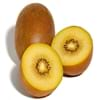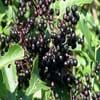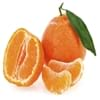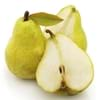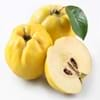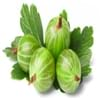Health Benefits
Cancer prevention, Heart care, Heat stroke treatment, Improves eye vision, Weight loss properties
Anti-inflammatory properties, Arthritis treatment, Regulates Blood Sugar, Unknown
General Benefits
Anti-inflammatory properties, Boosts immune system, Cures cough, Digestive aid, Fights against infections, Improves blood circulation
Boosts immune system, Controls blood sugar levels, Digestive aid
Skin Benefits
Anti-aging benefits, Brightens and lightens complexion, Reduces wrinkles
Nourishes skin, Protects skin from oxidative stress
Hair Benefits
Promotes longer and healthier hair, Protects hair
Prevents hair loss, Promotes longer and healthier hair, Regulates hair growth
Allergy Symptoms
Abdominal pains, Anaphylaxis, Inflammation
Asthma, Red rash, Swelling of mouth, tongue or lips
Side Effects
Diarrhoea, Might affect blood pressure level
Diarrhoea, Vomiting
Best Time to Eat
Along with meal, As a snack in the late afternoon, Don't consume at night and before bed, Morning time (before lunch)
As a snack in the late afternoon
Vitamin B5 (Pantothenic Acid)
Not Available
Vitamin C (Ascorbic Acid)
Vitamin E (Tocopherole)
Not Available
Vitamin K (Phyllochinone)
Not Available
Lutein+Zeaxanthin
Not Available
Phytosterol
Not Available
Calories in Fresh Fruit with Peel
Calories in Fresh Fruit without Peel
Not Available
Not Available
Calories in Frozen Form
Not Available
Calories in Canned Form
Not Available
Calories in Juice
Not Available
Calories in Jam
Not Available
Calories in Pie
Not Available
Type
Berry, Tree fruit
Berry
Season
Autumn, Winter
Winter
Varieties
Fuyu, Jiro, Gosho, Suruga, Hiratanenashi, Hachiya, Aizumishirazu, Yotsumizo, Yokono, Costata, Ormond and Tamopan
Bush Table Queen, Heirloom Table Queen, Festival Hybrid, Early Acorn Hybrid, Table Ace, Ebony and Cream of the Crop
Seedless Variety
Yes
Not Available
Color
Orange, Red, Yellow
Dark green, Green-yellow, Orange green
Inside Color
Orange
Not Available
Origin
Burma, China, India, Japan
Central America, North America, Unknown
Soil Type
Sandy loam, Well-drained
Well-drained
Climatic Conditions
Can tolerate wide range of climates
Cold, Sunny
Facts about
- Unripe persimmons contain lots of tannin which is used to brew sake & to preserve wood in Japan.
- A small non-edible fruit of persimmon tree is crushed with water, the solution is painted on paper & used to repel mosquitoes.
- It was named as Acorn Squash for its resemblance to a large ribbed acorn.
- It is said that squash was being grown in Mexico as long as 10,000 years ago.
- It was the first food cultivated by native American Indians.
Wine
Not Available
Not Available
Beer
Not Available
Not Available
Spirits
Not Available
Not Available
Cocktails
Not Available
Not Available
Other Countries
Azerbaijan, Brazil, Israel, Italy, Japan, Pakistan
Egypt, India, Iran, Italy, Mexico, Russia, Turkey, Ukraine, United States of America
Top Importer
United States of America
UAE
Botanical Name
Diospyros kaki
Cucurbita Pepo
Synonym
Not Available
Winter Squash
Subkingdom
Tracheobionta
Tracheobionta
Division
Magnoliophyta
Magnoliophyta
Class
Magnoliopsida
Magnoliopsida
Subclass
Dillenhidae
Dillenhidae
Order
Ericales
Cucurbitales
Family
Ebenaceae
Cucurbitaceae
Genus
Diospyros
Cucurbita
Generic Group
Not Available
Not Available
Difference Between Japanese Persimmon and Sapota
We might think that Japanese Persimmon and Sapota are similar with respect to nutritional value and health benefits. But the nutrient content of both fruits is different. Japanese Persimmon and Sapota Facts such as their taste, shape, color, and size are also distinct. The difference between Japanese Persimmon and Sapota is explained here.
The amount of calories in 100 gm of fresh Japanese Persimmon and Sapota with peel is 70.00 kcal and 40.00 kcal and the amount of calories without peel is Not Available and Not Available respectively. Thus, Japanese Persimmon and Sapota belong to Low Calorie Fruits and Low Calorie Fruits category.These fruits might or might not differ with respect to their scientific classification. The order of Japanese Persimmon and Sapota is Ericales and Cucurbitales respectively. Japanese Persimmon belongs to Ebenaceae family and Sapota belongs to Cucurbitaceae family. Japanese Persimmon belongs to Diospyros genus of D. kaki species and Sapota belongs to Cucurbita genus of Pepo species. Beings plants, both fruits belong to Plantae Kingdom.
